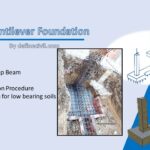In the ever-evolving landscape of healthcare infrastructure, the pivotal role of civil engineers is increasingly recognized. Without their knowledge, such as the mathematical discipline of three-dimensional geometry, buildings could not be erected. But for enhancing treatment, these concepts and skills are fundamental building blocks of engineering in erecting new healthcare sites for the next era of personalised technological intervention and care – an era heralding heightened patient outcomes everywhere.

Educational Insight: The Convergence of Engineering and Patient Care
Civil engineers are the linchpins in the design and construction of radiology facilities, where every aspect is meticulously planned to enhance patient experience and operational efficiency. In this context, the collaboration between civil engineers and radiology professionals is crucial, underscoring the importance of comprehensive educational programs in radiology. These programs not only equip future radiologists with the necessary technical skills but also offer insights into the intricacies of designing facilities that cater to the needs of both patients and healthcare providers. Such synergy between education and practical application ensures that radiology facilities are not only state-of-the-art in their design but also in the level of care they can provide.
- Patient-Centric Design: The floor plan emphasizes the importance of the patient: how much light is there? How easily can people find their way around? How does this de-stress the patient?
- Accessibility for All: Facilities are designed to be inclusive, accommodating patients with varied needs through features like adjustable examination tables.
These design features suggest the extent to which the engineers themselves understood their work as enabling this sort of physical and psychological recuperation.
Persuasive Argument: Engineering Precision as the Foundation of Radiological Excellence
The integration of sophisticated medical technologies within the structural design of radiology facilities is a testament to civil engineers’ precision and foresight.
- Innovative Shielding Solutions: Co-operation with medical doctors entailed more advanced shielding to prevent any radiation exposure, demonstrating engineers’ focus on health and safety.
- Sustainability in Practice: Green building practices display greater environmental stewardship, which also contributes to operational cost savings and increases patient comfort.
Indeed, in addition to being beneficial, these approaches are essential for the future of healthcare – an argument compelling enough almost on its own for the embracing of sustainable and patient-centered design strategies.
Data-Driven Design and Smart Technologies
New types of data analytics that resonate with category theory are developing in close relation to smart technologies. These are part of a new stage for smart engineering of the level of precision that is changing facility design, and is supported by big data as a new engineering discipline to improve radiology facility design and day-to-day operational performance. It’s a task typifying the new role for data analytics that we will return to at the end.
- Smart Infrastructure: For example, smart building systems that can track and adjust to energy use, indoor air quality and even patient flow can help optimize the delivery of patient care and patient comfort.
- Predictive Analytics: Utilizing data analytics for predictive maintenance of imaging equipment ensures optimal performance, minimizing downtime and enhancing the reliability of diagnostic services.
But it is this conscious embedding of technology that not only serves to efficiently manage facility services, but also provides another blueprint for how care can be organized around efficiency and algorithmic precision.
Future-Oriented Perspective: Preparing for the Technological Horizon
Civil engineers are the visionaries who anticipate and plan for the rapid pace of technological advancement in medical imaging.
- Design Flexibility: Facilities are engineered to adapt to future innovations, ensuring longevity and continued excellence in patient care.
- Resilience Building: Emphasizing structural resilience prepares facilities to withstand unforeseen challenges, securing the continuity of essential medical services.
Such thinking is critical to adapt radiologic services in such ways that they remain utilized in the delivery of higher-value care.
Enhancing Community Health: The Role of Public Engagement
Regardless of the route chosen to bring the radiology department into a new era of patient-centered service, whether private sector or hybrid community-based model, there is little doubt that the community (patients, parents and families of patients) and interprofessional collaboration provide a much-needed foundation for successful development, funding, use and evaluation of the radiology department.
- Community Feedback: Incorporating feedback from patients and the broader community offers invaluable insights into the practical aspects of facility design and operation, ensuring that services are attuned to the real needs of those they serve.
- Interdisciplinary Synergy: The fusion of expertise from various fields—ranging from medical professionals and technologists to patient care advocates—enriches the design process, leading to innovative solutions that enhance both the functionality and human experience of radiology facilities.
This expansive approach not only increases the reach of civil engineering innovations but also enriches connections between healthcare facilities and the communities within which they are embedded, building a foundation of trust and collaboration.
Call to Action: Joining Hands for a Healthier Tomorrow
The role of civil engineers in shaping the future of radiology facilities is undeniable. Their expertise in marrying form and function, their commitment to sustainability and inclusivity, and their foresight in design flexibility are foundational to the advancements in medical imaging.
- Collaborate: Professionals across disciplines should come together to share insights and innovations, driving the continuous improvement of radiology facilities.
- Innovate: Continuous investment in research and development is essential to leverage new technologies and materials that enhance facility design and function.
- Educate: Ongoing education and training for civil engineers and related professionals are vital to keep pace with the advancements in medical imaging technologies and healthcare needs.
By taking these actions, radiology facilities will continue to be leaders in providing patient-centered care, safe, efficient and compassionate for all. Through the collaboration of civil engineers, healthcare providers and stakeholders, and a working knowledge of design and human-centered solutions models, we can blend technology














